- Home
- Alison Weir
Traitors of the Tower Page 3
Traitors of the Tower Read online
Page 3
As soon as Henry VIII had got rid of Anne of Cleves, he married Katherine. The wedding took place in July 1540 at the palace of Oatlands in Surrey. Then the royal couple spent ten days alone in private.
Henry was then forty-nine, very fat, and old for his years. But he was given a new lease of life by his young bride. He loaded her with gifts, petted her in public and showed all the signs of being in love with her. He could not do enough for her. In tribute to his love, she took the motto: ‘No other will than his.’
Katherine enjoyed her new riches, the great palaces, the dancing, the fine gowns, the bright jewels and the sweet little lapdogs. Whether she was as pleased with her fat and ailing husband is not known. Rumours that Henry was impotent had been going round since Anne Boleyn’s downfall, but they may not have been true. Katherine also had to put up with the stink of his leg ulcers.
Henry was happy in his marriage. He thought himself blessed. He believed he had found the wife of his dreams. He struck a gold medal on which Katherine was called his ‘rose without a thorn’. He thanked God for sending him such a ‘perfect jewel’. The whole realm was made to ‘do her honour’.
Henry still hoped for an heir, and in April 1541, Katherine thought she was pregnant, but it seems she was not. It was as well, in view of what was to come.
Silly Katherine had taken some of the Duchess’s servants into her household, those same servants who had seen her romping with Dereham. At least one seems to have got in by the threat of blackmail. Katherine even took Dereham on to work for her. Her love for him had cooled, though, and by the spring of 1541, she had begun a secret affair with Thomas Culpeper, her cousin. He was a member of the King’s Privy Chamber, and much liked by Henry.
Taking risks with Culpeper was a stupid thing to do, given the fate of Anne Boleyn. But Katherine seems to have been heedless of the danger. Nor did she show much wisdom in falling for this young man, who had raped the wife of a park-keeper while his friends held her down. Then he had killed a man who had seen it all and vowed to report him. Culpeper had got away with it just because the King was so fond of him.
Lady Rochford was one of these who had served the Queen. She was the widow of Anne Boleyn’s brother; it was she who had accused her husband and his sister of incest. Now she aided Katherine’s affair with Culpeper, keeping watch when they met in secret.
When Henry took Katherine on a long journey to the north of England in the autumn of 1541, the lovers met as often as they could, even in a privy. Katherine would always ‘seek for the back doors and the back stairs herself’. Once, when the King came to sleep with his wife, he was kept waiting outside her door while Lady Rochford got rid of Culpeper. Katherine was putting herself in grave danger.
Katherine’s past was revealed when Mary Hall, one of the Duchess’s servants, told Thomas Cranmer, the Archbishop of Canterbury, about it. Cranmer was only too willing to bring down the Catholic Queen Katherine. He wrote a letter to the King, setting down what he had heard, and left it in the royal pew, so that Henry would find it when he went to Mass. Henry read it, but did not believe it could be true. He asked Cranmer to find out more.
When sound proof of Katherine’s shameless deeds was shown to Henry, he broke down in public and called for a sword to kill her. Then he ordered her arrest, and that of Lady Rochford. Katherine was shut in her rooms at Hampton Court and told that it was ‘no more the time to dance’. Legend has it that she broke free of her guards and ran to plead with Henry at the door of the Chapel Royal. It was said she knew that, if she could once more use her charms on him, he would forgive her. But she was dragged away, screaming, before she could reach him.
Henry left Hampton Court a broken and aged man. Katherine would never see him again. It was said that he looked ‘old and grey after the mishap of the Queen’. He tried to soothe his grief by going hunting and eating rich food. He was now so fat that three men could fit into his clothes. A new law was passed making it treason for a woman to marry the King without first telling him if she had a past. One wit wrote, ‘Few, if any, ladies at court would aspire to such an honour.’
Thomas Cranmer, the Archbishop of Canterbury, questioned the Queen and her servants for many days. Katherine was in a crazed state, and at first denied it all, even that she had been as good as married to Dereham. Admitting that might have helped her, for it would have made her marriage to the King null and void. But the foolish girl thought that denying everything was safer.
In the end, she broke down and confessed what had taken place before her marriage. That was no crime, of course. But Dereham let slip that she had left him for Culpeper, and adultery was another matter. In a queen, it was high treason. Katherine would only admit that she had flirted with Culpeper, given him gifts and called him her ‘little sweet fool’. Yes, she had sent him a letter ending with the words, ‘Yours as long as life endures’, but she firmly denied she had ever slept with him. She accused Lady Rochford of spreading that rumour, but Lady Rochford would not admit it.
Culpeper was arrested. He said he had met the Queen in secret many times, but that they had not ‘passed beyond words’. But when the council were told that they had met in the privy, they believed the worst.
Katherine was doomed. Her servants were sent away. Her jewels were given back to the King. She was sent to Syon Abbey by the Thames, where she was well looked after but made to live quietly and dress in sober clothes. Her rich gowns and jewels had been taken from her. The Howard family fell from favour, and many of its members were sent to prison. Dereham and Culpeper were tried and beheaded.
Katherine did not face trial. Instead, the House of Lords condemned her as a traitor, who must forfeit her life and goods. Three months after her arrest, the lords came for her. This was when she realised that the King really did mean to have her put to death and, in panic, she refused to go with them. But they forced her into the barge, and took her to the Tower. They passed under London Bridge, where the rotting heads of Dereham and Culpeper had been set on spikes.
In the Tower, Katherine could not stop weeping. Then she calmed down and asked if the block could be brought to her, so that she could practise how to behave nobly at her death, to uphold the honour of the great Howard family. She went to the scaffold on 13 February 1542, so weak with fear that she could hardly stand. She told the crowd that she deserved a hundred deaths. Then she knelt, and the axe took off her head with one blow. Wrapped in a black blanket, she was buried near her cousin, Anne Boleyn, in the Tower chapel.
Chapter Five
Jane Parker, Lady Rochford (1542) - The ‘Wicked Wife’
The claim that incest had taken place between Anne Boleyn and her brother, Lord Rochford, was said to have been made by his own wife, Jane, Lady Rochford. She helped bring to ruin not only her husband and his sister, but also Katherine Howard. Hers is one of the darker tales of the traitors of the Tower.
Jane Parker was the daughter of Henry, Lord Morley; her mother was a distant cousin of the King. She had been ‘brought up in the court’ from a young age, and was a maid of honour to Katherine of Aragon. In 1520, she had gone with Queen Katherine to ‘the Field of Cloth of Gold’, the famous meeting between Henry VIII and the King of France. Jane had become one of the court’s young stars, and in 1522 she danced the role of ‘Constancy’ in a display with Anne Boleyn and others.
By the end of 1524, Jane had married George Boleyn. As a wedding gift, the King gave the couple a manor in Norfolk. The Boleyn family went up in the world after Henry VIII began courting George’s sister, Anne Boleyn. George Boleyn became one of the most powerful men at court, loaded with offices and wealth, and in 1529 he became Lord Rochford.
Lady Rochford was for years a member of Anne Boleyn’s circle, and from 1533 she served her as a lady-in-waiting. At Anne’s crowning that year, Jane was given a special place with many great ladies.
An usher of the court, George Cavendish, who knew Jane but had no love for the Boleyns, took a poor view of her. He wrote that she had been bro
ught up without a bridle, and left to follow her lust and filthy pleasure, wasting her youth. She had no respect for her marriage vows, and did not fear God.
Lady Rochford had a talent for plotting. She was to prove that over and over again. In October 1534, when Henry VIII was unfaithful to Anne Boleyn, Anne asked Jane to help her get rid of the King’s mistress. The plan was to replace his mistress with Madge Shelton, the Queen’s cousin, who would not be so much of a threat to Anne. But Henry found out, and Lady Rochford was dismissed from her post of lady-in- waiting and sent away from court. We do not know when, or if, she returned.
In October 1535, while the King and Queen were away on a tour of the kingdom, Mary, Henry VIII’s daughter by his first wife, was seen in public. She was popular, and many felt sorry for the way she had been treated.
To show their support, ‘a vast crowd of women, unknown to their husbands, came before her, weeping and crying that she was their true princess’. It was treason to say this, and their leaders were put in prison in the Tower. One of them was Lady Rochford. She does not appear to have been in prison there for long.
It has been said that speaking out in favour of Mary was surprising for Lady Rochford, when she knew her future lay with the Boleyns. But quite a few of their party had given up on them, put off by Anne’s pride and sharp words. It also seems that Lady Rochford was jealous of her husband’s close bond with his sister, the Queen, so her breaking with the Boleyns makes sense. If you were not for them, then you had to be against them, batting for the other side, the Lady Mary.
Sir Francis Bryan was one of the men who would help to bring about Anne’s downfall. In 1536, when he and his friends were working against Anne, he visited Lady Rochford’s father, Lord Morley. He may have gone to tell Morley that Lady Rochford had accused her husband and the Queen of incest. Bryan perhaps hoped to gain the support of the shocked father for the Lady Mary. He may have known that Morley was a friend of Mary.
With his wife and his daughter, Morley would visit Mary in June 1536. They spoke only of ‘things touching to virtue’. Morley praised Mary in the books he gave her after that visit. When she became queen in 1553, he spoke of ‘the love and truth that I have borne to your Highness from your childhood’. This shows he had been loyal to Mary long before June 1536.
Lady Rochford, it seems, had been swayed by her father’s love for Princess Mary. Having been brought up at the court of Katherine of Aragon, she would have known Mary well. Lord Morley had held up the princess as a model of virtue and learning to his family. It is easy to see how Lady Rochford could have grown up loyal to Mary Tudor. It could be that she now saw herself as Mary’s friend and hoped to see her named Henry’s heir once more.
There was one other good reason why Lady Rochford could have come to hate the Boleyns in 1535. Her father had served the King’s grandmother, the Lady Margaret Beaufort. In 1535, the Lady Margaret’s great friend, the Bishop of Rochester, was put to death for being true to Queen Katherine. Lord Morley had been present in 1509 when Lady Margaret died during a Mass said by the Bishop. People blamed the Boleyns for the Bishop’s fate, and it may well be that Lord Morley and his family did too. It seems that they, like so many others, had chosen to distance themselves from Anne and place their hopes for the future in the Lady Mary.
But in 1536, Lady Rochford went as far as to accuse her husband of incest with his sister, the Queen. Some writers have questioned this, but many sources of the time show that it was Lord Rochford’s ‘wicked wife’ who betrayed this ‘cursed secret’ and was out for his blood. At his trial, Lord Rochford himself complained that he had been condemned on the word of ‘only one woman’. What could have driven Lady Rochford to do that?
It seems their marriage was not happy. There were no children, though Lord Rochford had a bastard son. Rochford owned a book, an attack on women and marriage, that perhaps matched his own views on his wife. He had got it in 1526, within two years of his wedding, and the writer of the book dates his torments to the day he himself was wed.
Rochford had been at the royal court since his early teens at least. He was good-looking and loose in morals. Cavendish wrote that his life was ‘not chaste’, his ‘living bestial’. He ‘forced widows and maidens’, and ‘spared none at all’.
If he did not stop even at rape, then the word ‘bestial’ might well mean that he took part in buggery too. Cavendish refers to Rochford being unable to resist this ‘vile’ and ‘unlawful deed’. On the scaffold, Rochford would confess that his sins were so shameful they were beyond belief, and he had known no man so evil.
Rochford may have forced his wife to submit to the kind of sex that outraged her. That was cause enough for her hatred. Some have said that Lady Rochford sought revenge on him after finding out that he had had gay sex with Mark Smeaton. But if that was true, why take it out on his sister Anne?
Lady Rochford may have been jealous of Rochford’s close bond with Anne. It was said she ‘acted more out of envy than out of love towards the King’. Perhaps she resented Anne for her part in getting her sent to the Tower. Or maybe she could see that the Boleyns were on a headlong course to ruin, and thought it a good idea to get on the right side of the King. It was wise to distance herself from the Queen’s party at this time. And Cromwell, the King’s chief minister, might have put pressure on her to speak against Anne.
Thanks to his wife, Lord Rochford was beheaded in May 1536. Lady Rochford, a ‘widow in black’ with a face of woe, left court. Her husband’s assets were seized by the Crown and given away, leaving her very poor. Even her rich court gowns had been taken. She was forced to beg for help. The King acted at once, forcing Lord Rochford’s father to give her a bigger income.
Soon after that, Lady Rochford was brought back to court as a lady-in-waiting to the next queen, Jane Seymour. She stayed in favour with the King, and was to serve two of his later wives, Anne of Cleves and Katherine Howard.
But in 1541, Lady Rochford became a party to treason. She rashly aided Katherine Howard’s affair with Thomas Culpeper, helping them to meet in secret. She even let them use her own room at court. It was a stupid thing to do, and she was putting herself in grave danger. She has been called a meddler who got a sordid thrill from it all. Katherine Howard herself later accused Jane of having a ‘wicked’ mind. True or not, both acted like witless fools.
When Katherine’s past came to light, she was put under guard with only Lady Rochford to wait on her. After the affair with Culpeper became known, Jane too was arrested. When Katherine went to Syon Abbey, Lady Rochford was sent to the Tower.
Some of the Queen’s women told the council that Lady Rochford had been a party to a plot of the Queen’s, and had passed on letters to Culpeper. They told how Lady Rochford had locked the King out that night, and how she had kept watch while Katherine and Culpeper brought each other to a climax. Then a letter from the Queen to her lover was found. ‘Come to me when Lady Rochford be here,’ she had written.
Lady Rochford was now seen as the chief cause of the Queen’s folly. She, more than anyone, had good cause to know what became of people accused of treason. Quizzed by the council, she said she thought Culpeper had had sex with Queen Katherine. She told them that the affair had begun in the spring, and gave many details. She said that Katherine knew the risks she was taking. Culpeper, in turn, accused Lady Rochford of pressing him to love the Queen.
Back in her prison, ‘that bawd Lady Rochford’ was so scared of what might be done to her that, for a time, she was ‘seized with raving madness’. The law did not permit mad persons to be put to death, but her ‘fit of frenzy’ did not save her. The King sent his doctors to treat her, and had an act act passed allowing him to put an insane traitor to death. In January 1542, Lady Rochford was found guilty of high treason, and she followed Katherine Howard to the block on 13 February 1542.
By the time Lady Rochford reached the scaffold, she was calm and ready to die. There was no sign of madness at her end. In her last speech, she spent a long t
ime dwelling on her faults. She said that God had let her suffer this shameful doom, because she had helped to bring about her husband’s death. ‘I falsely accused him of loving his sister, Queen Anne Boleyn. For this I deserve to die. But I am guilty of no other crime.’
Jane, Lady Rochford, was buried, like most of the Tower’s victims, in the royal chapel of St Peter. In 1876, experts dug up some of the graves, and some bones were found that they thought were hers. In fact, they were not her remains, and it is almost certain that the bones buried as ‘Lady Rochford’ were Anne Boleyn’s.
Many years later, George Cavendish wrote that Lady Rochford’s ‘slander for ever shall be rife’ and that she would be called the woman who craved vice. That is how she has gone down in history.
Chapter Six
Lady Jane Grey (1554) - The Nine-Days’ Queen
A little over four hundred and fifty years ago, a girl of sixteen, Lady Jane Grey, was made Queen of England. She is famous because her reign was to last for only nine days, and she met a tragic end. She was the helpless victim of ruthless and greedy men. Of all the traitors of the Tower, her story is the saddest.
Jane was born in 1536, and perhaps named for Jane Seymour, the third wife of Henry VIII. Jane’s mother, Frances Brandon, was Henry VIII’s niece. Four years earlier, Frances had married Henry Grey, Lord Dorset. Jane was their eldest living child, but her sex was a bitter blow to her parents, who wanted a boy. Yet they knew she could be useful to them, for the royal blood of the Tudors ran in her veins.
In 1537, Jane Seymour died after giving Henry VIII the son he had long craved. The new prince was called Edward. For some years, Lady Jane Grey’s parents plotted to marry her to him, and thus make her Queen of England in the future. That way, they could become a power in the land.

 Richard III and the Princes in the Tower
Richard III and the Princes in the Tower Britain's Royal Families: The Complete Genealogy
Britain's Royal Families: The Complete Genealogy The Lady in the Tower: The Fall of Anne Boleyn
The Lady in the Tower: The Fall of Anne Boleyn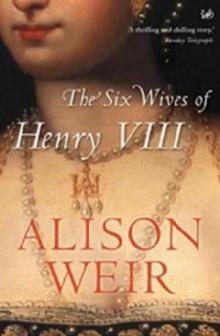 Six Wives of Henry VIII
Six Wives of Henry VIII Elizabeth of York: A Tudor Queen and Her World
Elizabeth of York: A Tudor Queen and Her World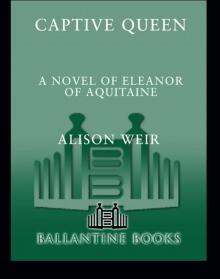 Captive Queen
Captive Queen Innocent Traitor
Innocent Traitor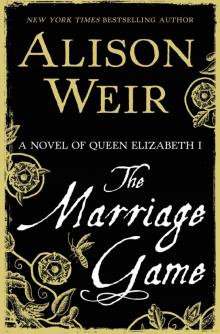 The Marriage Game
The Marriage Game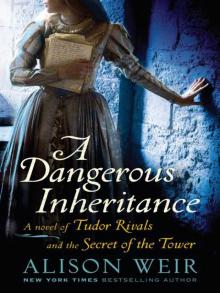 A Dangerous Inheritance
A Dangerous Inheritance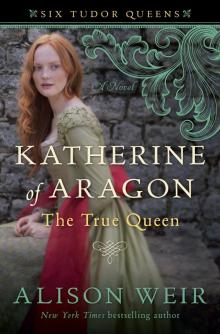 Katherine of Aragón: The True Queen
Katherine of Aragón: The True Queen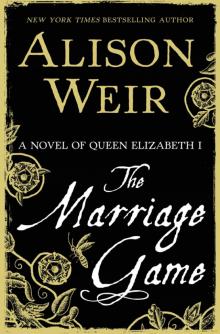 The Marriage Game: A Novel of Queen Elizabeth I
The Marriage Game: A Novel of Queen Elizabeth I Princes in the Tower
Princes in the Tower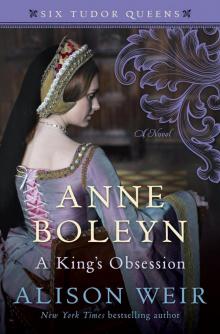 Anne Boleyn: A King's Obsession
Anne Boleyn: A King's Obsession Traitors of the Tower
Traitors of the Tower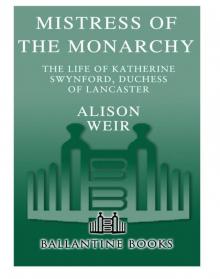 Mistress of the Monarchy: The Life of Katherine Swynford, Duchess of Lancaster
Mistress of the Monarchy: The Life of Katherine Swynford, Duchess of Lancaster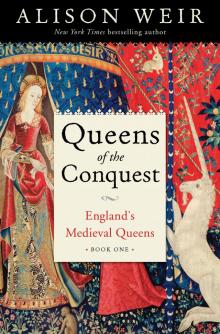 Queens of the Conquest: England’s Medieval Queens
Queens of the Conquest: England’s Medieval Queens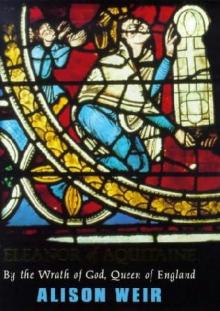 Eleanor of Aquitaine: A Life
Eleanor of Aquitaine: A Life Mary, Queen of Scots, and the Murder of Lord Darnley
Mary, Queen of Scots, and the Murder of Lord Darnley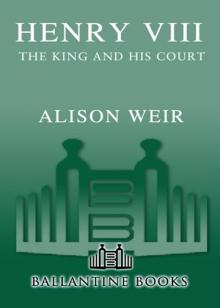 Henry VIII: The King and His Court
Henry VIII: The King and His Court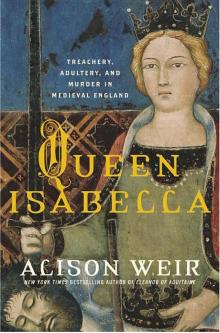 Queen Isabella: Treachery, Adultery, and Murder in Medieval England
Queen Isabella: Treachery, Adultery, and Murder in Medieval England Katheryn Howard, the Scandalous Queen
Katheryn Howard, the Scandalous Queen Arthur- Prince of the Roses
Arthur- Prince of the Roses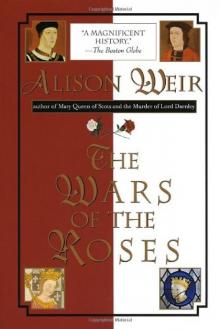 The Wars of the Roses
The Wars of the Roses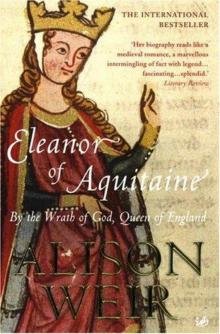 Eleanor of Aquitaine: By the Wrath of God, Queen of England
Eleanor of Aquitaine: By the Wrath of God, Queen of England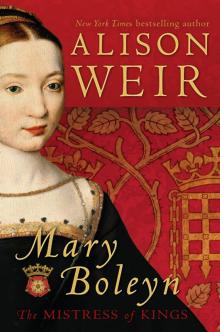 Mary Boleyn: The Great and Infamous Whore
Mary Boleyn: The Great and Infamous Whore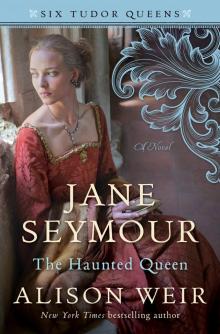 Jane Seymour: The Haunted Queen
Jane Seymour: The Haunted Queen Anna of Kleve, the Princess in the Portrait
Anna of Kleve, the Princess in the Portrait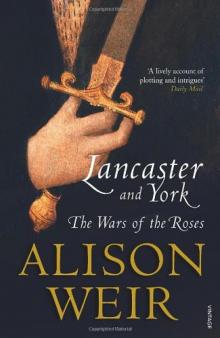 Lancaster and York: The Wars of the Roses
Lancaster and York: The Wars of the Roses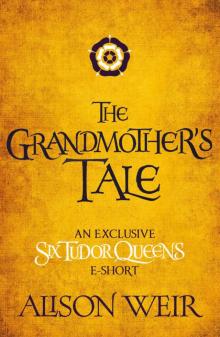 The Grandmother's Tale
The Grandmother's Tale The Princess of Scotland (Six Tudor Queens #5.5)
The Princess of Scotland (Six Tudor Queens #5.5)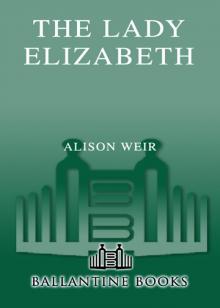 The Lady Elizabeth
The Lady Elizabeth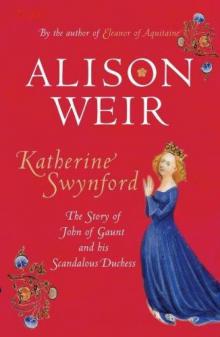 Katherine Swynford: The Story of John of Gaunt and His Scandalous Duchess
Katherine Swynford: The Story of John of Gaunt and His Scandalous Duchess The Curse of the Hungerfords
The Curse of the Hungerfords The Lost Tudor Princess: The Life of Lady Margaret Douglas
The Lost Tudor Princess: The Life of Lady Margaret Douglas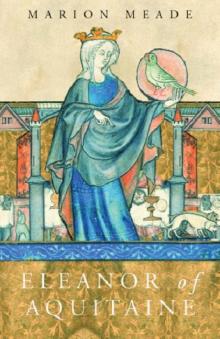 Eleanor of Aquitaine
Eleanor of Aquitaine Mistress of the Monarchy
Mistress of the Monarchy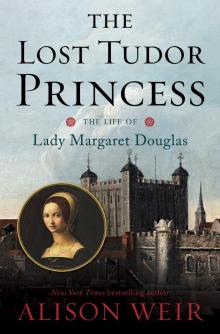 The Lost Tudor Princess
The Lost Tudor Princess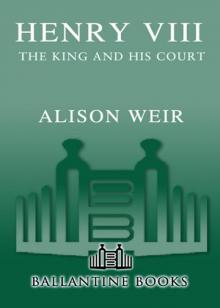 Henry VIII
Henry VIII Anne Boleyn, a King's Obsession
Anne Boleyn, a King's Obsession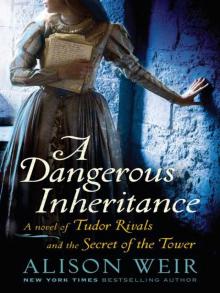 A Dangerous Inheritance: A Novel of Tudor Rivals and the Secret of the Tower
A Dangerous Inheritance: A Novel of Tudor Rivals and the Secret of the Tower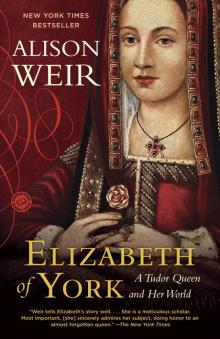 Elizabeth of York
Elizabeth of York Katherine of Aragon, the True Queen
Katherine of Aragon, the True Queen Katherine Swynford
Katherine Swynford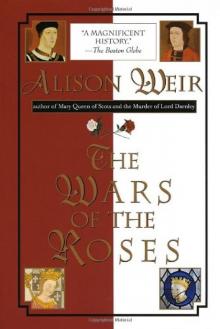 Wars of the Roses
Wars of the Roses Queens of the Conquest
Queens of the Conquest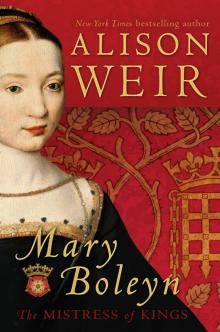 Mary Boleyn
Mary Boleyn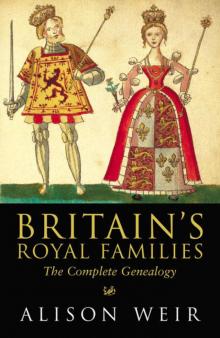 Britain's Royal Families
Britain's Royal Families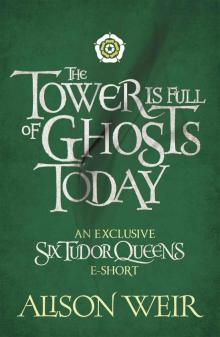 The Tower Is Full of Ghosts Today
The Tower Is Full of Ghosts Today Life of Elizabeth I
Life of Elizabeth I Anne Boleyn A King's Obssession
Anne Boleyn A King's Obssession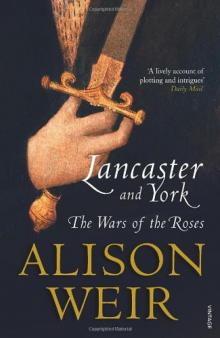 Lancaster and York
Lancaster and York Jane Seymour, the Haunted Queen
Jane Seymour, the Haunted Queen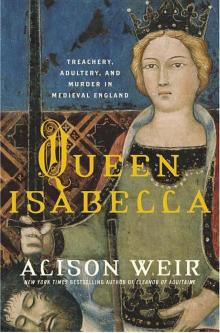 Queen Isabella
Queen Isabella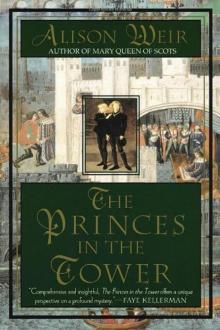 The princes in the tower
The princes in the tower